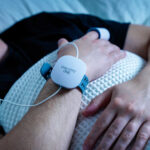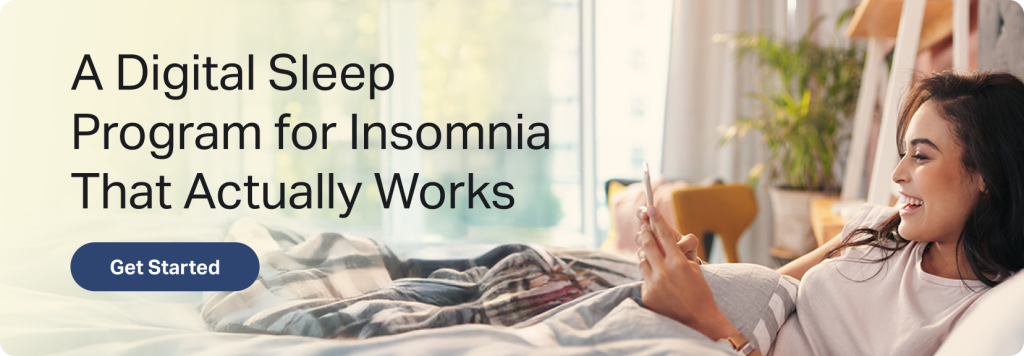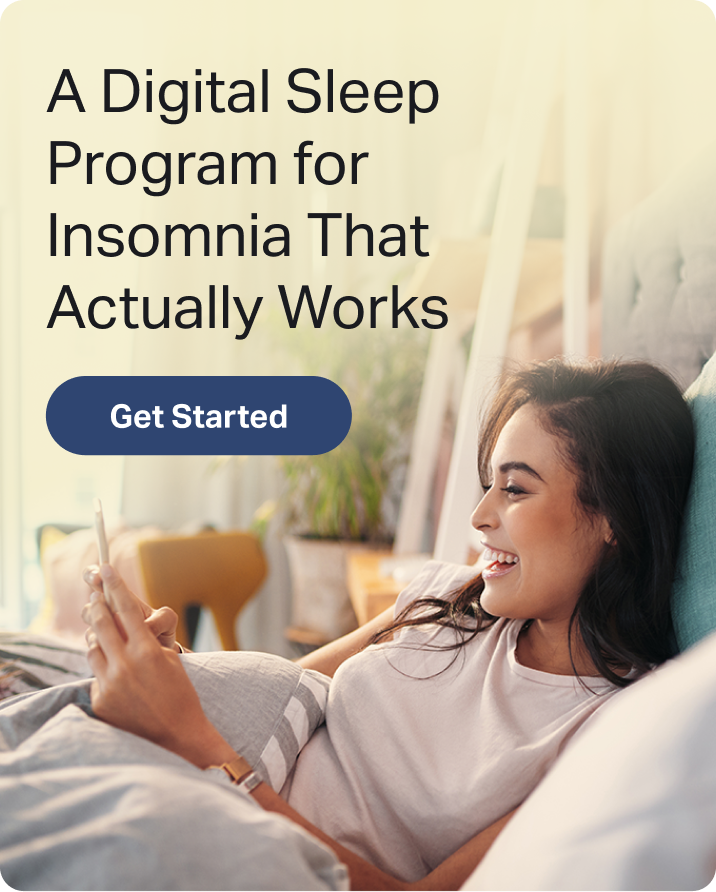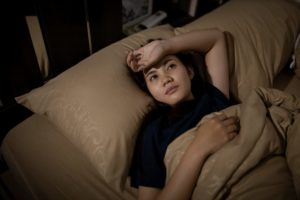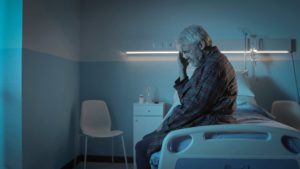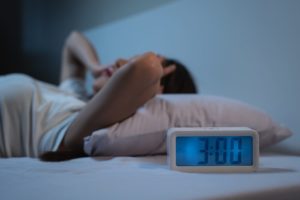When you buy through our links, we may earn a commission. Products or services may be offered by an affiliated entity. Learn more.
Cognitive Behavioral Therapy for Insomnia (CBT-I): An Overview
- CBT-I focuses on restructuring the thoughts, feelings, and behaviors that are contributing to insomnia.
- Therapy techniques involve stimulus control, sleep restriction, and relaxation training.
- Most individuals who try CBT-I experience improvements to their insomnia and better quality sleep.
- CBT-I is considered effective for both short-term insomnia and chronic insomnia.
Living with insomnia can be a challenge. Fortunately, effective treatments are available that can help people fall asleep faster, stay asleep, and feel more rested during the day. Cognitive behavioral therapy for insomnia (CBT-I) is a short, structured, and evidence-based approach to combating the frustrating symptoms of insomnia.
Struggling to Stay Awake? Take an At-Home Sleep Test
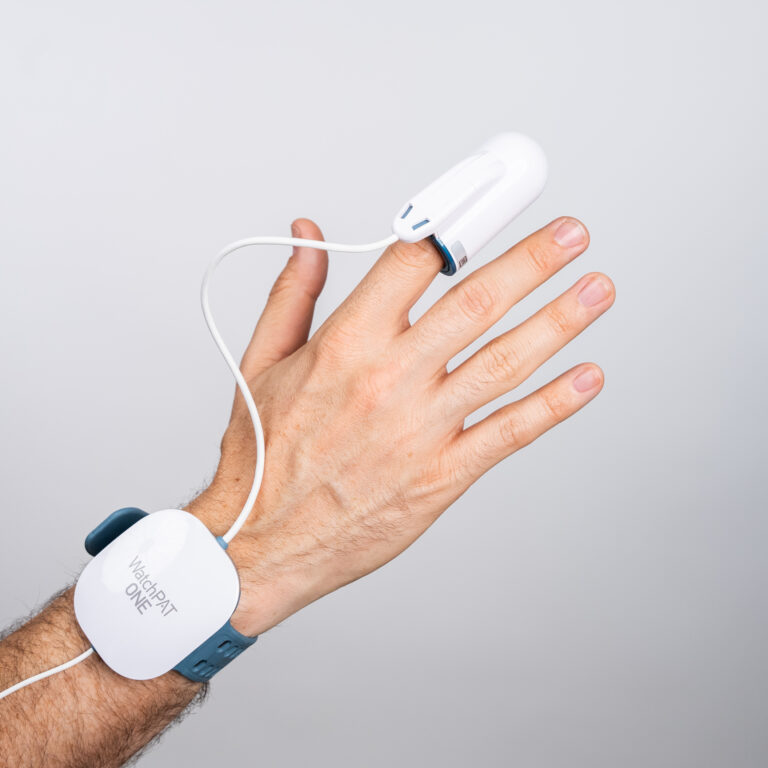
our partner at sleepdoctor.com
10% off Home Sleep Tests
Buy Now“Truly grateful for this home sleep test. Fair pricing and improved my sleep!”
Dawn G. – Verified Tester
How Does CBT-I Work?
CBT-I focuses on exploring the connection between the way we think, the things we do, and how we sleep. During treatment, a trained CBT-I provider helps to identify thoughts, feelings, and behaviors that are contributing to the symptoms of insomnia.
Thoughts and feelings about sleep are examined and tested to see if they’re accurate, while behaviors are examined to determine if they promote sleep. A provider will then clarify or reframe misconceptions and challenges in a way that is more conducive to restful sleep. Treatment often takes from 6-8 sessions , although the length may differ depending on a person’s needs.
Sessions may include cognitive, behavioral, and educational components.
- Cognitive interventions: Cognitive restructuring attempts to change inaccurate or unhelpful thoughts about sleep.
- Behavioral interventions: Stimulus control before bed, sleep restriction and compression, and incorporating relaxation techniques help to establish healthy pre-sleep habits.
- Psychoeducational interventions: Providing information about the connection between thoughts, feelings, behaviors, and sleep is central to CBT-I.
The number of qualified behavioral sleep medicine therapists in the U.S. is fairly limited. You can locate CBT-i providers and verify their credentials through certain professional organizations, including the American Psychological Association, American Board of Sleep Medicine, Association of Behavioral and Cognitive Therapies, and Society of Behavioral Sleep Medicine.
Cognitive Restructuring
In people with insomnia, inaccurate or dysfunctional thoughts about sleep may lead to behaviors that make sleep more difficult, which then reinforce the dysfunctional thoughts . For example, prior experiences of insomnia may lead to worry about falling asleep and spending excessive time in bed to try to force sleep. This can make falling asleep more challenging and create a frustrating, nightly cycle that is difficult to break.
Cognitive restructuring begins to break this cycle by identifying, challenging, and altering the thoughts and beliefs that contribute to insomnia. Common thoughts and beliefs that may be addressed during treatment include anxiety about past experiences of insomnia, unrealistic expectations of sleep time and quality, and worry about daytime fatigue or other consequences of missed sleep.
Stimulus Control
Many people with insomnia begin to dread their bedroom, associating it with wakefulness and frustration. They may also associate their bedroom with habits that make sleeping more difficult, like eating, watching TV, or using a cell phone or computer. Stimulus control attempts to change these associations , reclaiming the bedroom as a place for restful sleep.
During treatment, the bed is only used for sleep and sex. Clients are instructed to get out of bed when it’s difficult to fall asleep or when they lie awake for more than 10 minutes, only going back to bed when they are tired again. Clients are instructed to set an alarm for the same time every morning and are discouraged from taking daytime naps.
Sleep Restriction and Compression
People with insomnia often spend too much time lying in bed awake. Sleep restriction limits time spent in bed in order to increase the drive to sleep and temporarily increase daytime fatigue. It is not recommended for people with certain medical conditions that can be made worse by losing sleep, such as bipolar disorder and seizures.
Sleep restriction begins by calculating the total time spent asleep on a typical night using a sleep diary. Time in bed is then adjusted to reflect this amount, plus 30 minutes. For example, if a person is trying to sleep 8 hours a night but only getting 5 hours, they start by adjusting their bedtime later to spend 5 hours and 30 minutes in bed. Once a person spends the majority of their time in bed sleeping, they can begin gradually increasing their time in bed.
Sleep compression is a slightly different, and more gentle approach, often used with older people. Instead of immediately reducing time in bed to the amount of sleep they get on a typical night, time in bed is gradually reduced until it is reasonably close to the time they spend actually sleeping.
Relaxation Training
Relaxation techniques can help reduce the racing thoughts and tension that often accompany lying in bed awake. These techniques can increase the body’s natural relaxation response , which is helpful for the body and mind.
The best relaxation techniques are those that can be reasonably incorporated into a person’s routine. Here are a few relaxation techniques commonly taught in CBT-I:
- Breathing exercises: Many different breathing exercises may be taught in CBT-I. These exercises typically involve taking slow, deep breaths. Research has demonstrated that focused breathing can increase slow heart rate and breathing, and reduce feelings of anxiety, anger, and depression .
- Progressive muscle relaxation (PMR): PMR is a technique that involves tensing and relaxing different muscle groups. These techniques may be combined with breathing exercises or guided imagery.
- Autogenic training: This technique adjusts focus to different parts of the body and notices specific sensations. A person may focus on sensations such as heaviness, warmth, or relaxation.
- Biofeedback: Biofeedback uses technology to help monitor certain processes in the body such as brain waves, heart rate, breathing, and body temperature . Using the information provided by electronic devices, people may begin to learn to have more control over these processes.
- Hypnosis: Guided- or self-hypnosis for insomnia involves learning to relax when given a verbal or non-verbal cue.
- Meditation: Learning to focus attention through meditation has demonstrated a variety of health benefits , including reduced stress, anxiety, and increased relaxation. Meditation may also involve practices that combine focused attention with movement, such as yoga and tai chi.
Psychoeducation and Homework
Educating clients about the importance of good sleep hygiene is a core component of CBT-I. Good sleep hygiene involves increasing practices that encourage and support sleep, while decreasing or eliminating those that discourage sleep. Some topics that may be covered are the effects that diet, exercise, and sleeping environment have on falling and staying asleep.
CBT-I is a collaborative process and the skills learned in sessions require practice. Homework is a common component of treatment. Assignments in-between sessions may involve keeping a sleep diary, practicing questioning automatic thoughts or beliefs when they arise, and improving sleep hygiene practices.
Is CBT-I Effective?
When these techniques are used together as multicomponent CBT-I, as many as 70% to 80% of patients with primary insomnia experience improvements. Benefits include less time to fall asleep, more time spent asleep, and waking up less during sleep . Results are often maintained over time.
The American College of Physicians recommends that all adult patients receive CBT-I as a first-line approach . This treatment has also been shown to be effective in groups that are at particularly high risk of experiencing insomnia, such as pregnant people , people with post-traumatic stress disorder (PTSD) , and people experiencing insomnia after cancer treatment .
While this treatment is considered effective with many types of insomnia, it doesn’t always work right away. It can take time to learn and practice the skills learned in treatment. Some people find it helpful to track their progress over time in order to see small improvements that can encourage them to continue treatment. If CBT-I alone is not successful in improving the symptoms of insomnia, speak with a doctor about the risks and benefits of using sleep medications alongside CBT-I treatment.
Does CBT-I Have Risks?
In order for CBT-I to be effective, it’s important to be open to confronting unhelpful thoughts and behaviors. While the risks of treatment are likely to be mild, it may be uncomfortable at times. Talking about painful experiences, thoughts, and feelings can be challenging and may cause temporary stress and discomfort.
Working with a professional trained in CBT-I can help to minimize the risks of this treatment, as they are trained to offer support and tools to cope with temporary challenges or setbacks.
Who Provides CBT-I?
CBT-I is often provided by a doctor, counselor, therapist, or psychiatrist trained in this form of treatment. Practitioners with experience in CBT-I can be found through professional organizations such as the Society of Behavioral Sleep Medicine and the American Board of Sleep Medicine.
Unfortunately, due to the widespread need for this treatment, there aren’t enough CBT-I professionals to meet the current demand. In response, researchers have developed new ways of offering CBT-I, such as digital, group, and self-help formats.
Digital CBT-I
Several digital CBT-I (sometimes called dCBT) applications have been developed in order to adapt to this trend, reduce the cost of treatment, and offer the benefits of CBT-I to a wider audience. The Department of Veterans Affairs offers their own app, called CBT-I Coach, that is appropriate for non-veterans and veterans alike.
Online resources and smartphone applications offering dCBT-I vary based on several factors, including their purpose and the amount of involvement they require from a provider. Some resources simply offer support while people work with a trained CBT-I provider in person, while others are fully-automated and require no input from a clinician. Other resources and applications are a mix of the two, allowing people to work through a pre-set program and have regular e-mail or telephone-based feedback sessions with a professional.
Digital CBT-I is effective for treating insomnia in children, adolescents, and adults . Improvement in insomnia symptoms from dCBT-I appear to be similar to face-to-face approaches, although only a few studies have directly compared these different approaches.
Additional Tips for Sleeping With Insomnia
Learning about positive sleep habits is a core part of CBT-I. Tailoring recommendations is best done with the help of a doctor or CBT-I provider. That said, even people who haven’t received an insomnia diagnosis can struggle with sleep. Data from roughly 160,000 Sleep Foundation profiles shows more than 35% of respondents frequently struggle to fall and stay asleep.
Here are some basic tenets of sleep hygiene that anyone coping with sleep issues may find helpful.
- Maintain a sleep schedule: Having a regular, predictable sleep schedule can help your body maintain a rhythm and make it easier to fall asleep. This includes weekends too, which are a common time to forget about the importance of sleep.
- Don’t lie awake in bed: If you can’t sleep, get out of bed and find something relaxing to do until you feel tired again.
- Create a nightly routine: Give yourself enough time to get ready for bed. Turn off your electronics early and find some relaxing activities that help you wind down before sleep.
- Consider daytime activities: What you do during the day really counts. Even a small amount of exercise can help you sleep better. Also try to avoid eating, alcohol, and caffeine too close to bedtime.

Still have questions? Ask our community!
Join our Sleep Care Community — a trusted hub of sleep health professionals, product specialists, and people just like you. Whether you need expert sleep advice for your insomnia or you’re searching for the perfect mattress, we’ve got you covered. Get personalized guidance from the experts who know sleep best.
References
13 Sources
-
Pigeon W. R. (2010). Treatment of adult insomnia with cognitive-behavioral therapy. Journal of clinical psychology, 66(11), 1148–1160.
https://pubmed.ncbi.nlm.nih.gov/20853442/ -
Belanger, L., Savard, J., & Morin, C. M. (2006). Clinical management of insomnia using cognitive therapy. Behavioral sleep medicine, 4(3), 179–198.
http://www.tandfonline.com/doi/abs/10.1207/s15402010bsm0403_4 -
Bootzin, R. R., & Epstein, D. R. (2011). Understanding and treating insomnia. Annual review of clinical psychology, 7, 435–458.
https://www.annualreviews.org/doi/10.1146/annurev.clinpsy.3.022806.091516 -
National Center for Complementary and Integrative Health. (2016, May). Relaxation Techniques for Health.
https://www.nccih.nih.gov/health/relaxation-techniques-for-health -
Zaccaro, A., Piarulli, A., Laurino, M., Garbella, E., Menicucci, D., Neri, B., & Gemignani, A. (2018). How Breath-Control Can Change Your Life: A Systematic Review on Psycho-Physiological Correlates of Slow Breathing. Frontiers in human neuroscience, 12, 353.
https://pubmed.ncbi.nlm.nih.gov/30245619/ -
Melo, D., Carvalho, L., Prado, L., & Prado, G. F. (2019). Biofeedback Therapies for Chronic Insomnia: A Systematic Review. Applied psychophysiology and biofeedback, 44(4), 259–269.
http://link.springer.com/10.1007/s10484-019-09442-2 -
National Center for Complementary and Integrative Health. (2016, April). Meditation: In depth.
https://www.nccih.nih.gov/health/meditation-in-depth -
Trauer, J. M., Qian, M. Y., Doyle, J. S., Rajaratnam, S. M., & Cunnington, D. (2015). Cognitive Behavioral Therapy for Chronic Insomnia: A Systematic Review and Meta-analysis. Annals of internal medicine, 163(3), 191–204.
https://www.acpjournals.org/doi/10.7326/M14-2841 -
Qaseem, A., Kansagara, D., Forciea, M. A., Cooke, M., Denberg, T. D., & Clinical Guidelines Committee of the American College of Physicians (2016). Management of Chronic Insomnia Disorder in Adults: A Clinical Practice Guideline From the American College of Physicians. Annals of internal medicine, 165(2), 125–133.
http://annals.org/article.aspx?doi=10.7326/M15-2175 -
Manber, R., Bei, B., Simpson, N., Asarnow, L., Rangel, E., Sit, A., & Lyell, D. (2019). Cognitive Behavioral Therapy for Prenatal Insomnia: A Randomized Controlled Trial. Obstetrics and gynecology, 133(5), 911–919.
https://pubmed.ncbi.nlm.nih.gov/30969203/ -
Talbot, L. S., Maguen, S., Metzler, T. J., Schmitz, M., McCaslin, S. E., Richards, A., Perlis, M. L., Posner, D. A., Weiss, B., Ruoff, L., Varbel, J., & Neylan, T. C. (2014). Cognitive behavioral therapy for insomnia in posttraumatic stress disorder: a randomized controlled trial. Sleep, 37(2), 327–341.
https://pubmed.ncbi.nlm.nih.gov/24497661/ -
Johnson, J. A., Rash, J. A., Campbell, T. S., Savard, J., Gehrman, P. R., Perlis, M., Carlson, L. E., & Garland, S. N. (2016). A systematic review and meta-analysis of randomized controlled trials of cognitive behavior therapy for insomnia (CBT-I) in cancer survivors. Sleep medicine reviews, 27, 20–28.
https://linkinghub.elsevier.com/retrieve/pii/S1087079215000921 -
Luik, A. I., Kyle, S. D., & Espie, C. A. (2017). Digital cognitive behavioral therapy (dcbt) for insomnia: A state-of-the-science review. Current sleep medicine reports, 3(2), 48–56.
https://pubmed.ncbi.nlm.nih.gov/28553574/



